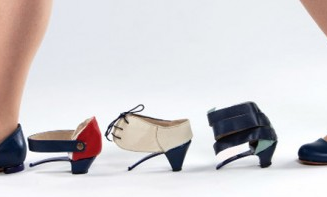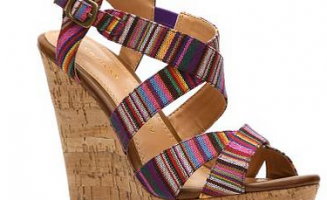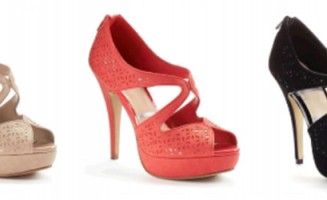 I have always loved bracelets. But I can rarely wear a store bought one, unless it’s made for kids.
I have always loved bracelets. But I can rarely wear a store bought one, unless it’s made for kids.
Good or bad, I have small wrists ~ really small wrists. So small that 90% of the kids in Miss Collins’ 3rd grade class had wrists that were larger than mine! (I know this for a fact because I happened to be there on a day when the kids were learning about measurement, so they added my wrist and thumb circumferences to their chart. It was a good laugh for the kids at least.)
Nevertheless, because of this I have generally stayed away from the “one-size-fits-all” style of bracelets ~ even when the memory wire bracelet craze started. I loved the thought of a wire bracelet that kept its shape, but could be slipped on and off with ease. Unfortunately, those wire coils were still too large for me.

Memory Wire Bracelet by Stacey
Then I was walking through the local craft store, looking for inspiration for this blog, when I noticed one little word on a package that changed my life: There, in the upper right hand corner of a package of memory wire, was the word “small.” Sure it was probably made for kids; but I could add any beads I wanted. I could make it look like it was designed for a grown-up. Oh, the possibilities! Plus it’s so easy to work with that making a bracelet for every occasion takes no time at all!
Materials

1 coil of memory wire
heavy duty wire cutters*
round-nose pliers
2 pair flat nose pliers
assortment of beads
2 coordinating charms
* Do not use jewelry wire cutters on memory wire. They are not strong enough and will be damaged. Special cutters are made for memory wire; but I have found that a big pair of heavy duty wire cutter works as well.
Before Beginning
Before starting this project, let’s learn how to fashion end loops. You’ll need to cut about 5 inches of wire to use for practicing making the end loops.

cutting the wire
Hold the wire coil in your non-dominant hand, with the end you are going to work on facing away from your body. Using the round-nose pliers in your dominant hand, grip the end of the wire. The diameter of the pliers is graduated, so depending on where you grip the wire you may have a big end loop or a small end loop. I tend to like small ones better. It doesn’t show as much if it isn’t perfect and there is more stability. I usually grip the wire about 1/4 inch from the end of the pliers.

gripping the wire
Once you have a good grip on the wire, twist your wrist away from your body. The motion is similar to starting a car engine. You will want to keep constant, hard pressure on the wire with your non-dominant thumb. Twist until the wire loops back and touches itself. You probably won’t be able to do it in one motion, so go as far as you can, loosen your grip with the pliers, reposition and continue.

twisting the wire
Now you have a nice little loop to hang a charm from. Cut the loop off using the heavy-duty wire cutters and keep practicing with this piece of wire until you feel confident in loop-making.

a finished end loop
Let’s make a memory!
Step 1 ~ Cut Your Wire

Find the beginning of the coil of Memory wire. Count two complete loops and then another 1-1/2 inches of wire. Cut with the wire cutters.
Step 2 ~ Bead

Randomly slide on beads until there is only 1/2 inch of wire left on each end. Use tape or a bead spring to keep the beads on one end from falling off while you work on the other end.
Step 3 ~ Make End Loops

Using the method above for making end loops, add one on each end.
Step 4 ~ Add Charms

Using the flat nose pliers, open the charm’s jump ring and attach it to the bracelet’s end loop. Repeat for the opposite end loop. (If you aren’t sure of the proper way to open a jump ring, there is a tutorial in my “Ready to Rhumba” post.)
That’s all there is to it, except…
While I was shopping for the beads for this project I was reminded of how overwhelming that can seem. I thought it would be a good idea to take a few moments to discuss COLOR.

If you don’t have a good color wheel handy, you should find one. Most craft stores have them in the bead aisle. Sometimes one can be found in the little inspiration pamphlets that are hanging there, free for the taking.
There are several different ways of looking at your assortment of beads for this project.
Monochromatic Groupings
All beads are a shade (darker), tone (muted) or tint (lighter) of the same color, creating a concentrated pop of color. This works best with a mixture of textures, shapes and sizes.
Achromatic Groupings
A mixture of whites, blacks and grays create a timeless and elegant look.
Analogous Groupings
A combination of any three or four colors that are next to each other on the color wheel (for example: blue, blue-violet and violet) create a harmonious and soothing effect.
Complementary Groupings
A combination of two colors that are opposite each other on the color wheel create a bold and vibrant statement.
Triadic or Split Complementary Groupings
Any three colors equally spaced from each other on the color wheel (for example: yellow-green, red-orange and blue-violet) are combined to create a striking yet balanced contrast.

Assorted bracelet color combinations featuring Monochromatic in Yellow (top left), Anachromatic Black and White (top right), Analogous in Blue (middle left), Complimentary and Christmassy (middle right) and Triadic Combination for Spring (bottom left).
The World Around You
Another good way to find color inspiration is to look around your house. What color combinations are in your artwork, furnishings, and favorite clothing?
Or, take a walk outside: Mother Nature is the master of color. Look at flowers, fruits, sunsets and streams.
And if you still aren’t inspired, take a trip to the paint store. This season’s hottest new trends in color have already been put together for you. All you have to do is collect a few sample cards!
Hopefully these few tips will help get you started on making some beautiful memory wire bracelets!

Stacey Bayliff, chain maille enthusiast and “Jack of all Crafts”
Stacey is a self-proclaimed “Jack-of-all-Crafts.”
Although an English as a Second Language teacher by profession, she has been cross-stitching, rubber stamping and making jewelry since she was a teenager. Her most recent obsession is chain maille jewelry.
She lives in Columbus, Ohio with her husband and three children, where she enjoys reading, letterboxing, genealogy and watching reality tv.
A variety of Stacey’s jewelry creations can be found at Magpie Fair.








Love this project, Stacey. And love that you offered so much guidance on choosing go-with colors!
These are SO great! I love making them because I want to change up my jewelry so often and this is a quick way to satisfy my color and fashion urges. I made a red hued coil bracelet recently to get the popular stacked look without the extra cost of individual bracelets. I made each coil a different “look” and ended up with about 5 coils!! Is there too much of a good thing??